Everything You Need to Know About Leg Cramps
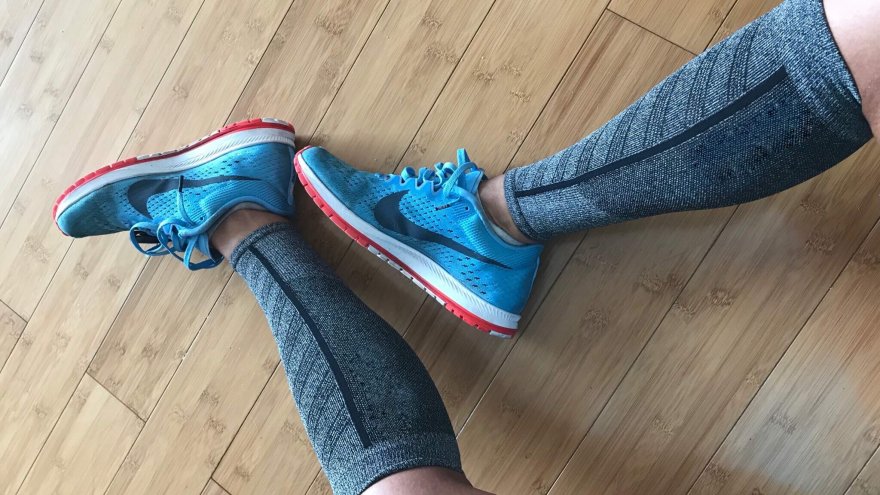
Whether you are out for a run, sitting at work, or trying to get a good night’s sleep, a leg cramp can be debilitating, extremely uncomfortable, and annoying. Although it only lasts between seconds to a couple of minutes, the awful sensation can make it seem like hours. A muscle cramp is basically an involuntary contraction of a muscle, or spasm, that does not relax. Since there are several causes of muscle cramps, it may take a long time to understand how to treat yours and ways to prevent them. An old theory was that muscle cramps were solely caused by dehydration, especially if they occurred while exercising outdoors, but over time research has shown that there are several causes and just about anyone can experience one. Unfortunately, once a cramp hits all you can do at the moment is learn how to manage it.
Causes of Leg Cramps
Vigorous Activity or Muscle Fatigue: When a muscle or group of muscles is not accustomed to a certain activity, such as increased mileage for example, it may cause a cramp once it gets into a ‘tired’ stage. This type of cramp can occur during the activity or several hours later. The muscle fatigue can occur just as likely while sitting or being in one position for too long. The muscles sustaining that position can fatigue, just as in exercise, and develop cramping. This type of cramping is most common in athletes and older adults who begin an exercise program.
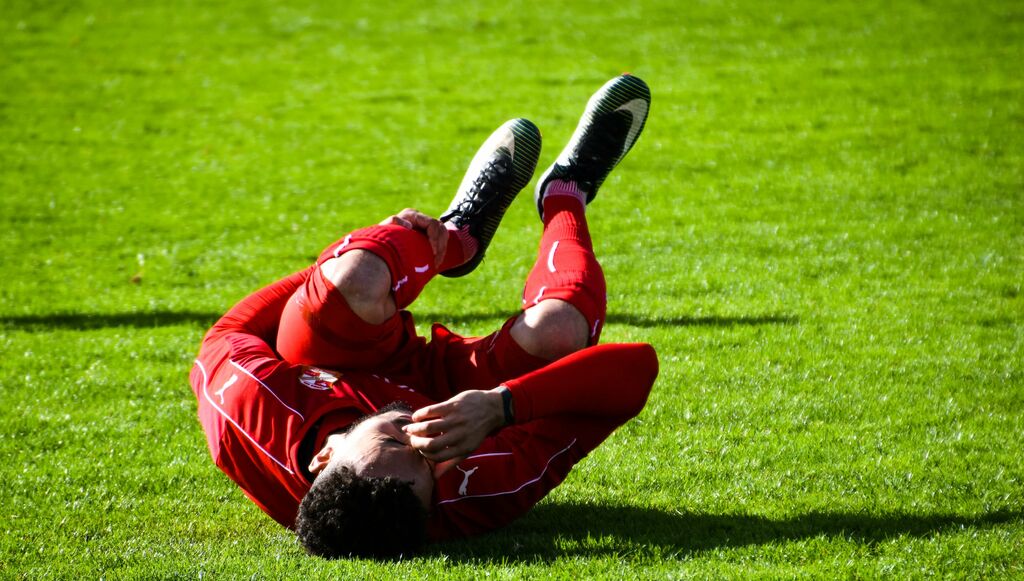
Injury: When there is an injury in the body, the muscles react by attempting to prevent any movement surrounding the injured site for protection. This response is usually in the form of a cramp, especially when the individual voluntarily tries to move the injured body part.
Dehydration: The excessive fluid loss in the body can lead to muscle cramps as well. This is common in endurance athletes, such as runners and cyclists, who train outdoors for long periods of time. Muscle cramps during these situations are usually an early sign of heat stroke. Cramping from dehydration may also occur with the increased intake of diuretics, which are commonly taken by older adults.
Insufficient minerals in the body: Low levels of calcium and magnesium in the blood increase nerve impulses in the muscles, which cause spasms. This is commonly seen in pregnant women who do not supplement with the minerals in their diets. Conditions that decrease these minerals in the body may also lead to cramping, such as excessive vomiting, diarrhea or hyperventilation. Poor absorption of calcium from vitamin D insufficiency and parathyroid gland dysfunction are also causes of cramps. Low potassium levels have been thought to lead to cramps as well, but this may be due to its association with muscle weakness, which will eventually lead to the fatigue causing spasms when overused. This is why some insist on eating a banana daily to prevent cramps, which may not be a bad idea.
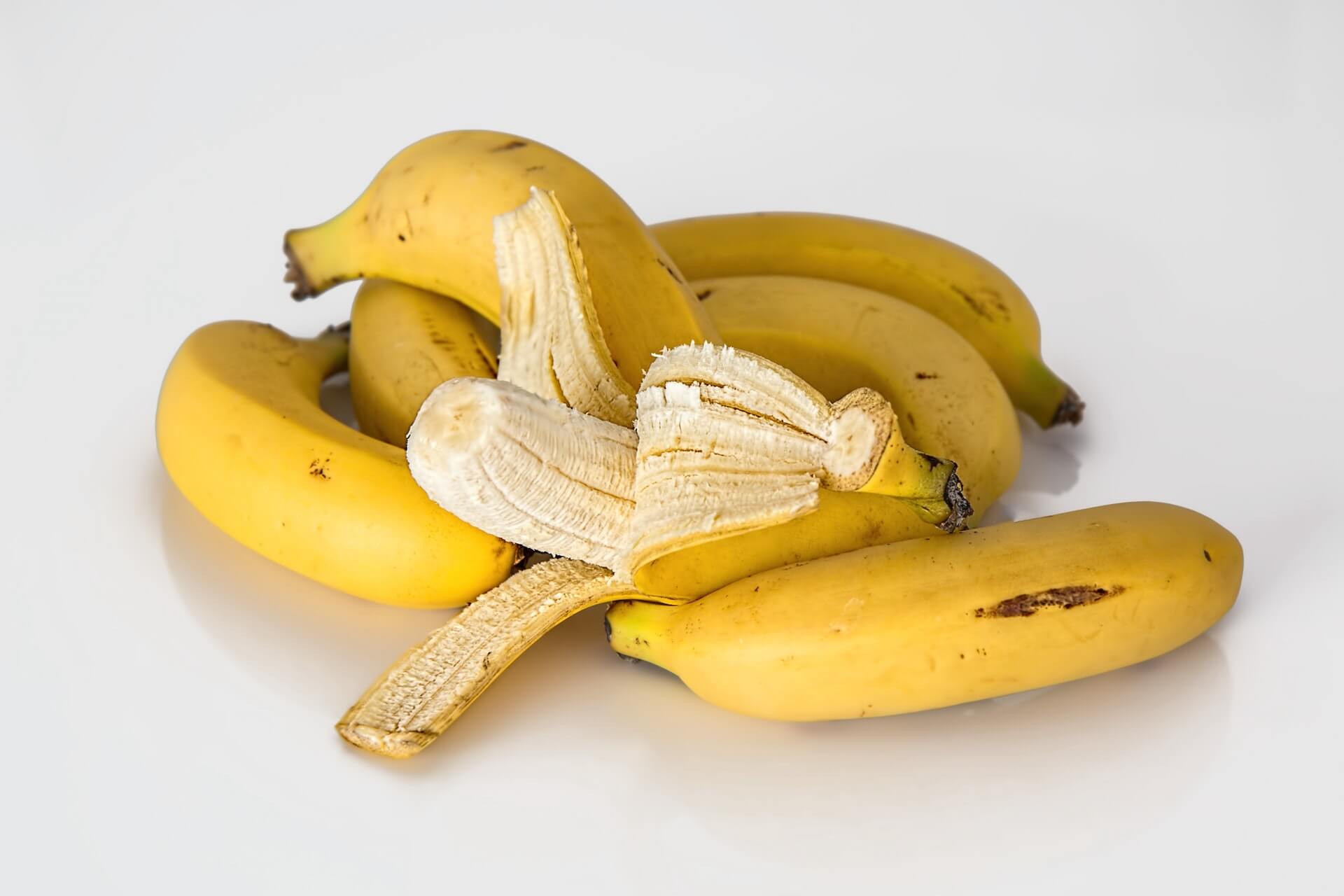
Rest: Night cramps are probably the most common type of cramp in older adults. The cause of these types of spasms is poorly understood. One trigger may be the voluntary contraction of a weak or fatigued muscle while lying in bed, such as pointing the toe downward which contracts the calf muscle, the most common site of cramping. Nocturnal cramps can be extremely painful and disrupt sleep very frequently.
Treating Cramps
If you experience a cramp while running, you should stop immediately. Continuing to run will only exacerbate the cramp and cause worse pain. You may also end up with significant muscle soreness for a few days that will keep you out of running. If the cramp begins during prolonged positioning such as sitting or sleeping in bed, it is best to change positions of the affected leg as soon as possible. Most of the time, in either circumstance, placing the leg in a rested position will ease the cramping, and it will usually subside within a minute or two.
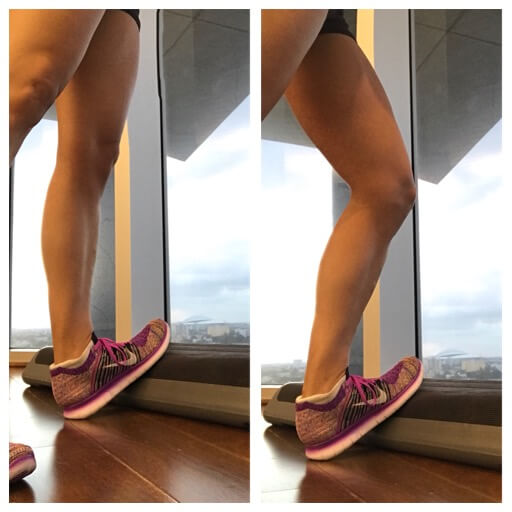
Stretching & Icing
If voluntarily relaxing the leg does not ease the cramping, stretching should be performed. This may be uncomfortable and increase pain initially, but it will help relax the muscle further. Calf stretching either standing or sitting for a few seconds should work to ease the cramp. If the cramping is in the hamstring or adductors (inner thigh muscles), bring your knee to your chest while lying down or lie against a wall with your leg stretched upwards for a full hamstring stretch. Foot cramps may be eased with gently massaging along the arch until the tendons relax. If you experience frequent cramps within a short period of time, it may help to apply ice to the area for about 10 minutes at a time. This will constrict the blood flow to the area and relax the muscle.

Prevention
If the cause of your leg cramps is weakness, fatigue, tight muscles, or overuse, then there are several ways to help prevent the issue. Runners who experience frequent cramps should make sure to develop a better pattern of rest and activity in order to avoid overuse of the affected area. Incorporating more strengthening and stretching for the muscles is important to assist in prolonging the time to fatigue during running and other activities.
Bridges and leg curls with an exercise ball are an effective non-weight bearing exercise to target the hamstrings. To strengthen the calves, variations of heel raises will focus on all portions of this muscle group. While standing lift the heels for 10 to 20 repetitions with the feet pointing inwards, outwards, and straight. Heel raises with the knees bent, in a squat, will target a deeper calf muscle called the soleus, which is a commonly ignored muscle group. Strengthening the feet is also important for runners as our feet are the foundation for the rest of the body and are constantly working. Place a towel on the floor and try to pick it up for 10 repetitions by curling your toes.
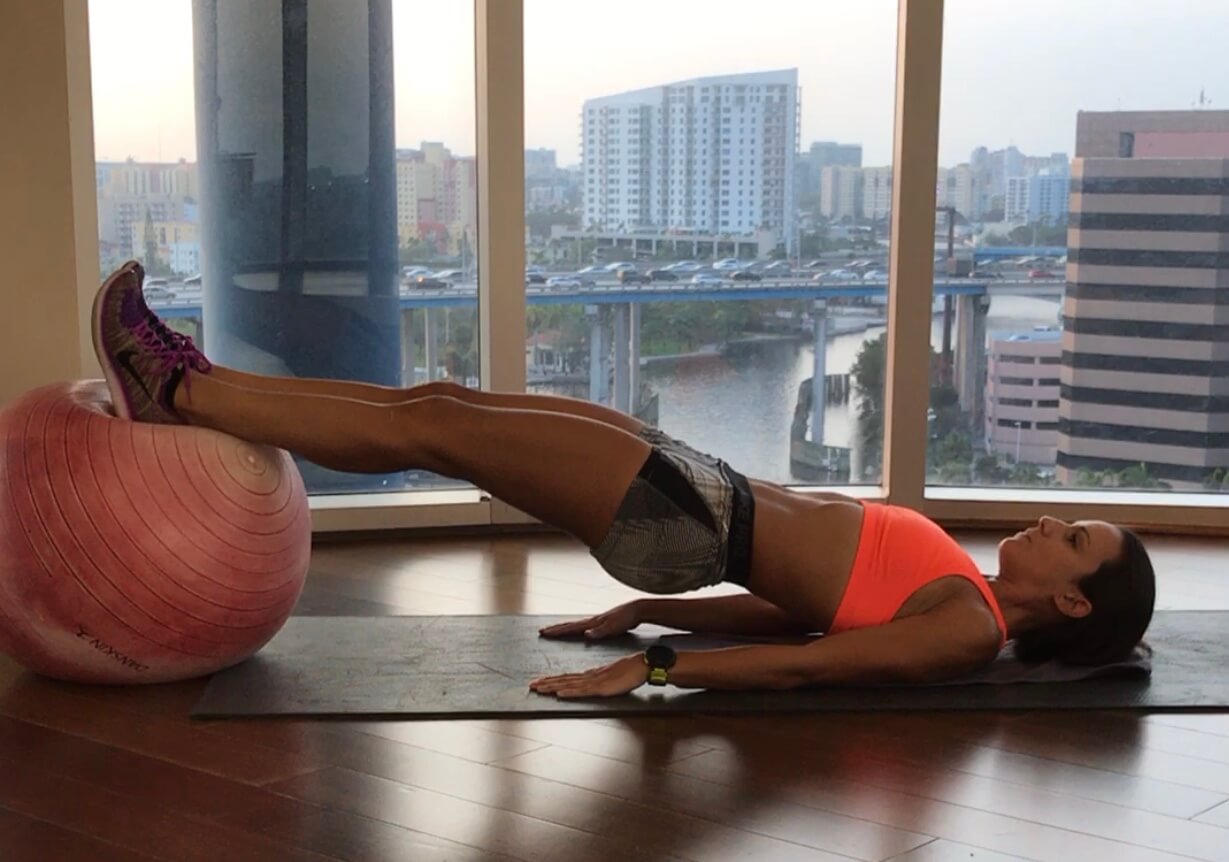
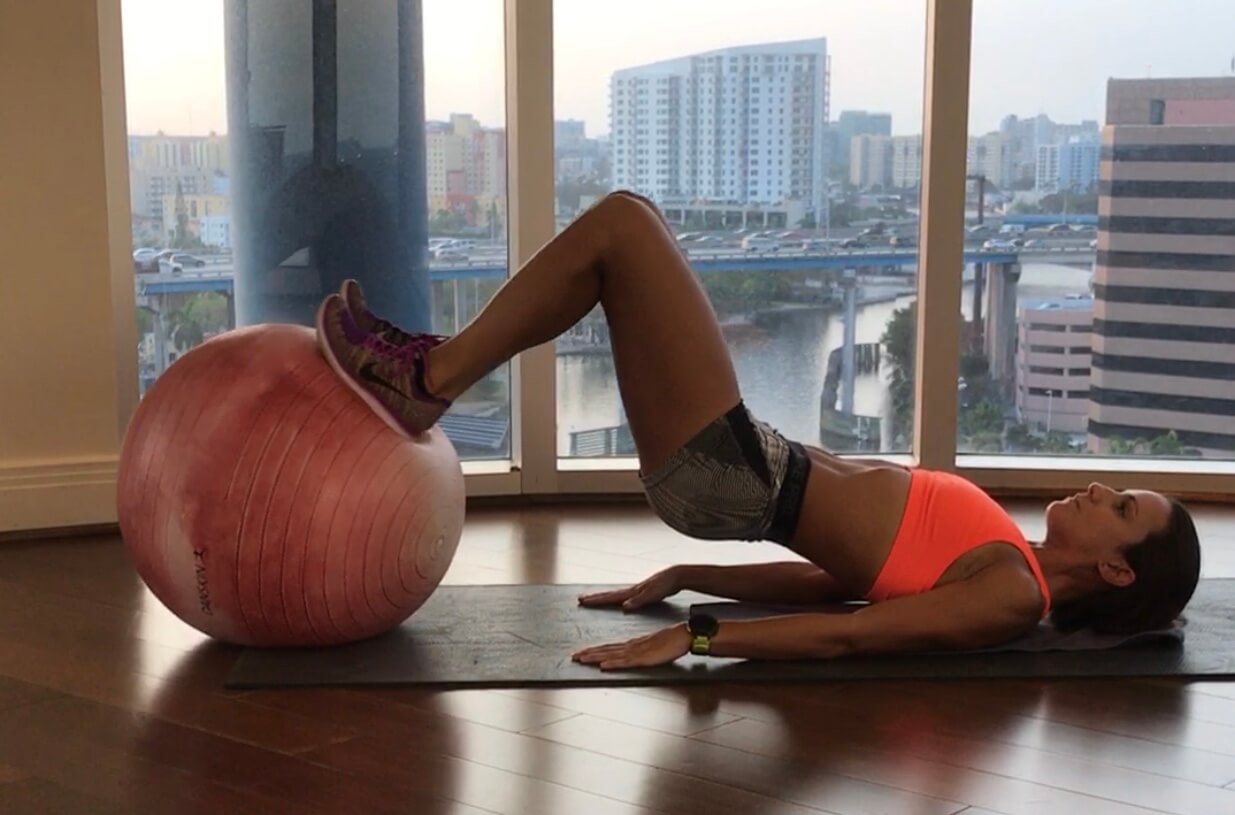
Stretching for all muscle groups is always important and helpful to relieve tightness. Dynamic stretching and a warm-up before runs and static stretching after running are ideal. Dynamic stretching examples include lunges, mini squats, military marches, and walking. Static stretching consists of holding a prolonged position for at least 20 seconds, as shown in the images above. Regular foam rolling is also a great way to keep muscles loose. It will help break up adhesions and knots along the muscles, similar to a massage.

If your leg cramps are occurring for a reason other than increased activity or fatigue, it is important to get evaluated in order to prevent the issue from continuing. As mentioned above, it may be caused by certain medications, vitamin or mineral deficiency, or dehydration, which may only require some tweaking in your daily diet. Cramps are usually not a medical emergency, but if you feel they are occurring more frequently, getting stronger in intensity, or if you are having difficulty managing them, it is recommended to seek medical advice.
Sources
Latest Articles
 Is Running on a Treadmill Easier Than Running Outside?Runners have their own preferences, whether it is treadmill running, running outside on the road, or exploring trails. So...
Is Running on a Treadmill Easier Than Running Outside?Runners have their own preferences, whether it is treadmill running, running outside on the road, or exploring trails. So... Is It OK to Use Trail Running Shoes on the Road?While trail running shoes can be used on roads, especially in situations where a runner encounters mixed terrains or pref...
Is It OK to Use Trail Running Shoes on the Road?While trail running shoes can be used on roads, especially in situations where a runner encounters mixed terrains or pref... How to Fix Sore Quads After Running?Rest, ice, gentle stretching, and over-the-counter pain relievers can help soothe sore quads after running. Also, ensure ...
How to Fix Sore Quads After Running?Rest, ice, gentle stretching, and over-the-counter pain relievers can help soothe sore quads after running. Also, ensure ... 10 Fruits With The Most Electrolytes to Replace Sports DrinksThese fruits are high in electrolytes such as potassium, magnesium, and calcium, essential for hydration, muscle function...
10 Fruits With The Most Electrolytes to Replace Sports DrinksThese fruits are high in electrolytes such as potassium, magnesium, and calcium, essential for hydration, muscle function...

